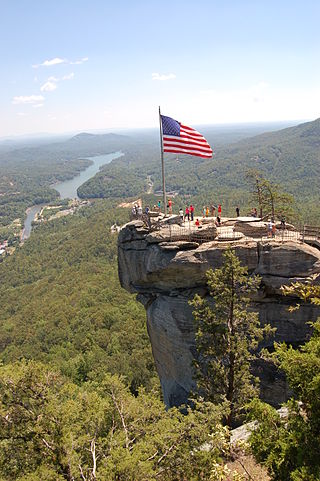
A land-grant university is an institution of higher education in the United States designated by a state to receive the benefits of the Morrill Acts of 1862 and 1890, or a beneficiary under the Equity in Educational Land-Grant Status Act of 1994. There are 57 institutions which fall under the 1862 Act, 19 under the 1890 Act, and 35 under the 1994 Act.
The Crown Estate is a collection of lands and holdings in the United Kingdom belonging to the British monarch as a corporation sole, making it "the sovereign's public estate", which is neither government property nor part of the monarch's private estate. The Crown Estate in England, Wales, and Northern Ireland is managed by the Crown Estate Commissioners. In Scotland, the Crown Estate is managed by Crown Estate Scotland, since the Scottish estate was devolved in 2017.

The Permanent University Fund (PUF) is a sovereign wealth fund created by the State of Texas to fund public higher education within the state. A portion of the returns from the PUF are annually directed towards the Available University Fund (AUF), which distributes the funds according to provisions set forth by the 1876 Texas Constitution, subsequent constitutional amendments, and the board of regents of the Texas A&M University System and University of Texas System. The PUF provides extra funds, above monies from tax revenues, to the UT System and the Texas A&M System which collectively have approximately 50 percent of state public university students. The PUF does not provide any funding to other public Universities in the State of Texas.
Massachusetts shares with the five other New England states a governmental structure known as the New England town. Only the southeastern third of the state has functioning county governments; in western, central, and northeastern Massachusetts, traditional county-level government was eliminated in the late 1990s. Generally speaking, there are four kinds of public school districts in Massachusetts: local schools, regional schools, vocational/technical schools, and charter schools.

The Constitution of the State of Michigan is the governing document of the U.S. state of Michigan. It describes the structure and function of the state's government.
The Commission to Explore a Route for a Canal to Lake Erie and Report, known as the Erie Canal Commission, was a body created by the New York State Legislature in 1810 to plan the Erie Canal. In 1817 a Canal Fund led by Commissioners of the Canal Fund was established to oversee the funding of construction of the canal. In 1826 a Canal Board, of which both the planning commissioners and the Canal Fund commissioners were members, was created to take control of the operational canal. The term "Canal Commission" was at times applied to any of these bodies. Afterwards the canal commissioners were minor state cabinet officers responsible for the maintenance and improvements of the state's canals.

The secretary of state is an official in the state governments of 47 of the 50 states of the United States, as well as Puerto Rico and other U.S. possessions. In Massachusetts, Pennsylvania, and Virginia, this official is called the secretary of the commonwealth. In states that have one, the secretary of state is the chief administrative officer of the state and is often the primary custodian of important state records. In the states of Alaska, Hawaii, and Utah, there is no secretary of state; in those states many duties that a secretary of state might normally execute fall within the domain of the lieutenant governor. Like the lieutenant governor, in most states, the secretary of state is in the line of succession to succeed the governor, in most cases immediately behind the lieutenant governor. In three states with no lieutenant governor as well as the U.S. territory of Puerto Rico, the secretary of state is first in the line of succession in the event of a gubernatorial vacancy.

The attorney general of Wisconsin is a constitutional officer in the executive branch of the government of the U.S. state of Wisconsin. Forty-five individuals have held the office of attorney general since statehood. The incumbent is Josh Kaul, a Democrat.
The Department of State Lands (DSL), one of the oldest agencies of government of the U.S. state of Oregon, is principally responsible for the management of lands under state ownership, as its name implies. Unlike most other department-level state agencies, it is not headed by a sole elected official, but is the administrative arm of the Oregon State Land Board. Although established by the Constitution, subsequent statutes have added to its duties and authority, and include some provisions relating to its conduct. In addition to managing state-owned lands, the Board through the Department is responsible for the Common School Fund, off-shore lands and coastal estuarine tidelands, submerged and submersible lands of the navigable waterways, unclaimed property, estates with no heirs, and additional functions assigned by the Oregon Legislative Assembly from time to time. The Board decides cases, adopts rules, issues policy statements, and approves DSL recommendations.
The Arizona State Land Department is a department of the state government in the U.S. state of Arizona dedicated to the management of state-owned lands and property.
The Alabama Department of Conservation and Natural Resources (ADCNR) is the state agency responsible for the conservation and management of Alabama's natural resources including state parks, state lands, wildlife and aquatic resources. ADCNR also issues hunting and fishing licenses for the state. The department promotes wise stewardship and enjoyment of the state's natural resources through five divisions: Marine Resources, State Lands, State Parks and Wildlife and Freshwater Fisheries. Supporting those divisions are seven support sections: Accounting, Diversity and Recruiting, Engineering, Information and Education, Information Technology, Legal, and Personnel and Payroll.
The state treasurer of Wisconsin is a constitutional officer in the executive branch of the government of the U.S. state of Wisconsin. Thirty-six individuals have held the office since statehood. The incumbent is John Leiber, a Republican.

The Mississippi secretary of state is an officer of Mississippi originally established under the Article IV, §14 of Mississippi Constitution of 1817, and was reestablished under Article V, §133 of the Mississippi Constitution of 1890.

The Washington State Department of Natural Resources (DNR) manages over 3,000,000 acres (12,000 km2) of forest, range, agricultural, and commercial lands in the U.S. state of Washington. The DNR also manages 2,600,000 acres (11,000 km2) of aquatic areas which include shorelines, tidelands, lands under Puget Sound and the coast, and navigable lakes and rivers. Part of the DNR's management responsibility includes monitoring of mining cleanup, environmental restoration, providing scientific information about earthquakes, landslides, and ecologically sensitive areas. DNR also works towards conservation, in the form of Aquatic Reserves such as Maury Island and in the form of Natural Area Preserves like Mima Mounds or Natural Resource Conservation Areas like Woodard Bay Natural Resource Conservation Area.
Following the defeat of the Confederate States in the American Civil War, Texas was mandated to rejoin the United States of America. Union Army soldiers officially occupied the state starting on June 19, 1865. For the next nine years, Texas was governed by a series of provisional governors as the state went through Reconstruction. As stated by the Texas State Library and Archive Commission, in 1869, the United States Congress passed an act allowing the citizens of Texas to vote on a new State Constitution. Later that same year, President Grant approved their Constitution. Texas fully rejoined the Union on March 30, 1870, when President Grant signed the act to readmit Texas to Congressional Representation. Texas later repealed the State Constitution of 1869 and enacted the Texas State Constitution of 1876 on February 15, 1876, which remains their current state constitution though with numerous amendments.

The Oklahoma Commissioners of the Land Office is an agency of the government of Oklahoma. The Land Office was created by the Oklahoma Constitution and is responsible for managing and controlling lands and funds granted to the state under the provisions of the Oklahoma Organic Act. These lands and fund are used to support common schools, colleges and universities. The Commissioners of the Land Office distributes over $125 million each year to K-12 schools and qualifying higher education institutions across the state.
Eleazer Root was an American educator and Episcopalian priest from New York, who moved to Wisconsin as a young man and spent much of his career and adult life there. He served a term in the Wisconsin Assembly and was appointed as the first Superintendent of Public Instruction. Because of his health, in his last years he moved to St. Augustine, Florida, serving as rector of Trinity Parish from 1874 to 1884. Root is considered as one of the founding fathers of Wisconsin and was also instrumental in organizing the University of Wisconsin as a member of the first board of regents.
State trust lands were granted by the United States Congress to states upon entering the Union. These lands were designated to support essential public institutions which are primarily public schools. State trust land managers lease and sell these lands to generate revenue for current and future designated beneficiaries. Predominantly found in the western United States, 46 million acres of land are currently designated as trust lands and the proceeds from the lease and sale of these lands are distributed into a state's permanent fund and used for many purposes.

The North Carolina General Assembly established the Parks and Recreation Trust Fund (PARTF) in 1994 to fund improvements in the state's park system, fund grants for local governments and increase public access to state beaches. The Parks and Recreation Authority, a fifteen-member appointed board, was also created to allocate funds from PARTF to the state parks and to the grants program for local governments.

The Big Sur Land Trust is a private 501(c)(3) non-profit located in Monterey, California, that has played an instrumental role in preserving land in California's Big Sur and Central Coast regions. The trust was the first to conceive of and use the "conservation buyer" method in 1989 by partnering with government and developers to offer tax benefits as an inducement to sell land at below-market rates. Since 1978, with the support of donors, funders and partners, it has conserved over 40,000 acres through conservation easements, acquisition and transfer of land to state, county and city agencies. It has placed conservation easements on 7,000 acres and has retained ownership of over 4,000 acres.










